Agenda-Setting Dynamics during COVID-19: Who Leads and Who Follows?
Abstract
1. The Communication Pattern during Pandemics
2. Intermedia Agenda-Setting
3. Who Sets the Media Agenda?
- RQ1. What were the main topics of discussion on the social media agenda during the first wave of the pandemic?
- RQ2. What were the main topics of discussions on the media agenda during the first wave of the pandemic?
- RQ3. Do news articles predict social media posts or is it vice versa?
4. Method
Spread of COVID-19: posts and articles that fall within this category discuss the initial outbreak and its subsequent spread among countries, signs and symptoms of COVID-19 and modes of transmission;Prevention and control: tweets and news articles that fall within this category discuss what actions should be taken to prevent the virus from spreading and how COVID-19 should be treated;Government response: tweets and news articles that report the measures taken by the government to lower the transmission and spread of the coronavirus, as well as the attitudes towards these decisions;Fear and death: this category comprises news articles and Twitter posts that raise tension by emphasizing the number of people dead or the dire consequences of the spread of the disease;Disinformation: comprises stories and posts that contain or try to expose misinformation, lies, rumours and myths about the spread, treatment or effects of COVID-19;Effect on daily life: stories and posts in this category discuss COVID-19’s impact on our daily lives, its effects on economy, culture, education, sports and tourism, as well express emotions towards COVID-19 or the measures taken by the government.
5. Results
6. Discussion and Conclusions
Author Contributions
Funding
Data Availability Statement
Conflicts of Interest
Appendix A
| Name of Media | Number of Articles |
|---|---|
| Tvnet.lv | 7499 |
| Jauns.lv | 5529 |
| Nra.lv | 5133 |
| Delfi.lv | 4877 |
| La.lv | 4845 |
| Lsm.lv | 5090 |
| Apollo.lv | 3668 |
| Diena.lv | 3295 |
| Skaties.lv | 3268 |
| Bnn.lv | 900 |
| Ir.lv | 334 |
| Vestnesis.lv | 326 |
| Lvportals.lv | 25 |
| Total | 44,789 |
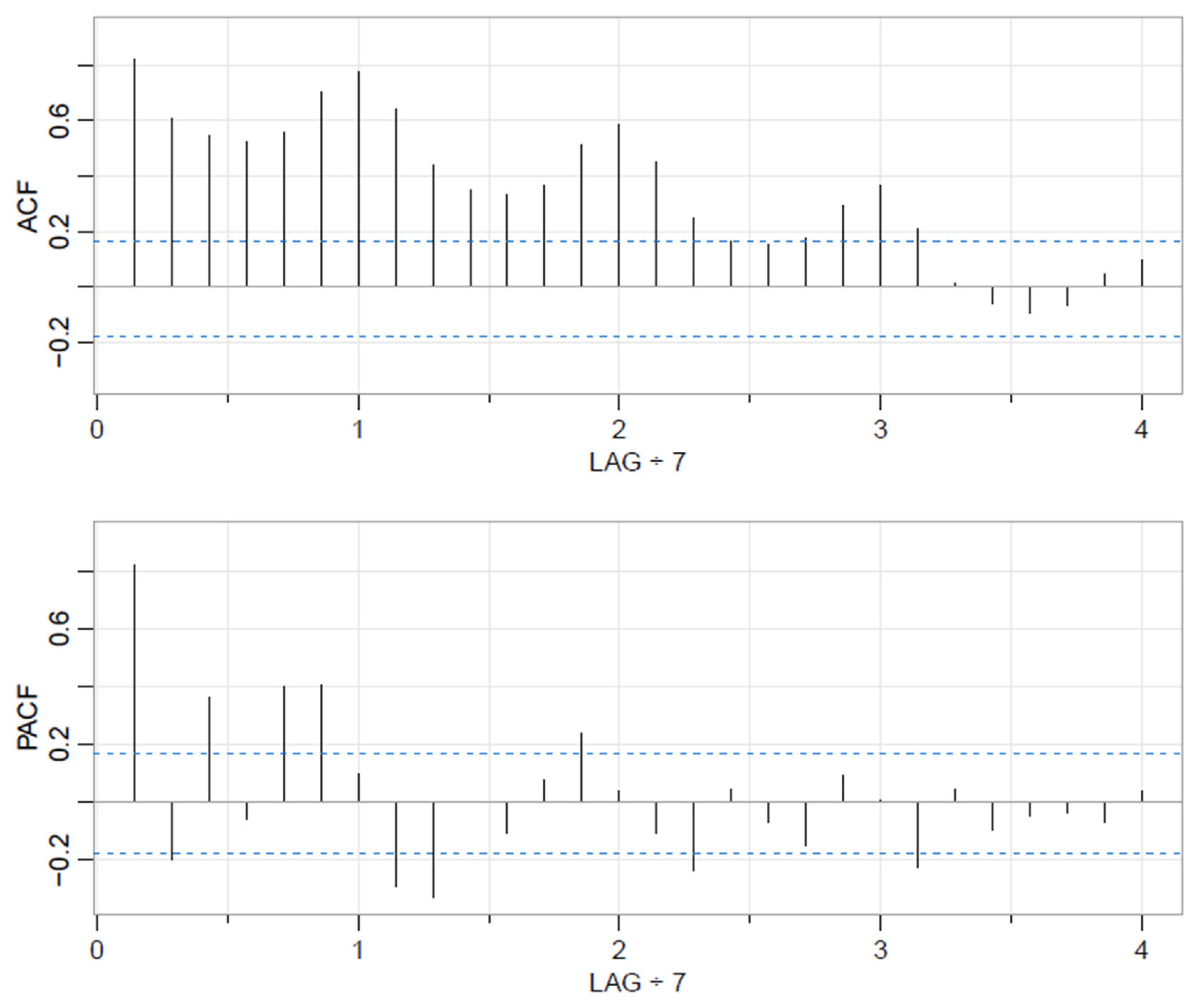
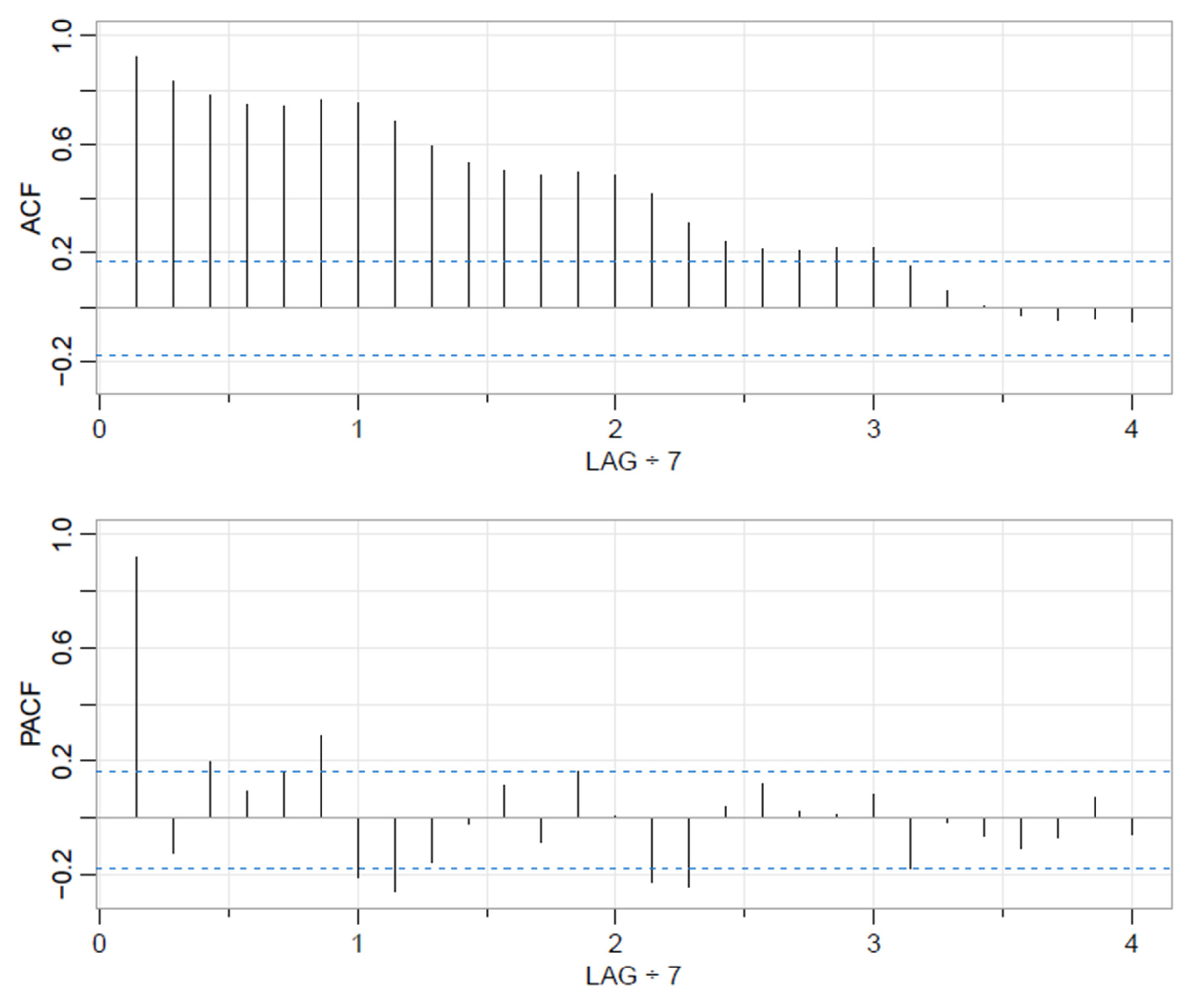
| 1 | According to the by-law of the Crisis Management Council, the Crisis Management Council is a coordinating institution, the objective of the operation of which is to ensure coordinated actions of state and local government institutions in taking measures for the prevention and suppression of danger to the state, as well as measures for the liquidation of consequences caused thereby. |
References
- Ahmad, Araz Ramazan, and Hersh Rasool Murad. 2020. The impact of social media on panic during the COVID-19 pandemic in Iraqi Kurdistan: Online questionnaire study. Journal of Medical Internet Research 22: e19556. [Google Scholar] [CrossRef] [PubMed]
- Barberá, Pablo, Andreu Casas, Jonathan Nagler, Patrick J. Egan, Richard Bonneau, John T. Jost, and Joshua A. Tucker. 2019. Who Leads? Who Follows? Measuring Issue Attention and Agenda Setting by Legislators and the Mass Public Using Social Media Data. American Political Science Review 113: 883–901. [Google Scholar] [CrossRef] [PubMed]
- Blank, Grant. 2017. The Digital Divide Among Twitter Users and Its Implications for Social Research. Social Science Computer Review 35: 679–97. [Google Scholar] [CrossRef]
- Chadwick, Andrew. 2017. The Hybrid Media system: Politics and Power. Oxford: Oxford University Press. [Google Scholar]
- Cohen, Bernard Cecil. 1963. The Press and Foreign Policy. Princeton: Princeton University Press. [Google Scholar]
- Du, Ying Roselyn. 2008. Mass Media’s Agenda Setting Function in the Age of Globalization: A Multi-National Agenda-Setting Test. Doctoral dissertation, University of North Carolina, School of Journalism and Mass Communication, Chapel Hill, NC, USA. [Google Scholar]
- Du, Ying Roselyn. 2013. Intermedia agenda-setting in the age of globalization: A multinational agenda setting test. Global Media and Communication 9: 19–36. [Google Scholar] [CrossRef]
- Glasgow, Kimberly, Jessika Vitak, Yla Tausczik, and Clay Fink. 2016. “With your help... we begin to heal”: Social media expressions of gratitude in the aftermath of disaster. In International Conference on Social Computing, Behavioral-Cultural Modeling and Prediction and Behavior Representation in Modeling and Simulation. Berlin: Springer, pp. 226–36. [Google Scholar]
- Golan, Guy. 2006. Intermedia agenda setting and global news coverage. Journalism Studies 7: 323–33. [Google Scholar] [CrossRef]
- Guo, Lei, Hong Tien Vu, and Maxwell McCombs. 2012. An Expanded Perspective on Agenda-Setting Effects: Exploring the Third Level of Agenda Setting. Revista de Comunicación 11: 51–68. Available online: https://www.researchgate.net/publication/303199053_An_expanded_perspective_on_agenda-setting_effects_Exploring_third_level_agenda_setting (accessed on 5 April 2022).
- Han, Chunjia, Mu Yang, and Athena Piterou. 2021. Do news media and citizens have the same agenda on COVID-19? An empirical comparison of twitter posts. Technological Forecasting and Social Change 169: 120849. [Google Scholar] [CrossRef]
- Harder, Raymond A., Julie Sevenans, and Peter Van Aelst. 2017. Intermedia agenda setting in the social media age: How traditional players dominate the news agenda in election times. International Journal of Press/Politics 22: 275–93. [Google Scholar] [CrossRef]
- Holcomb, J., K. Gross, and A. Mitchell. 2011. How Mainstream Media Outlets Use Twitter. Pew Research Center. Available online: https://www.pewresearch.org/journalism/2011/11/14/how-mainstream-media-outlets-use-twitter/ (accessed on 10 November 2022).
- Jang, S. Mo, and Yong Jin Park. 2017. Redirecting the focus of the agenda: Testing the zero-sum dynamics of media attention in news and user-generated media. International Journal of Communication 11: 3998–4017. [Google Scholar]
- Jungherr, Andreas. 2016. Twitter use in elections campaigns: A systematic literature review. Journal of Information Technology & Politics 13: 72–91. [Google Scholar] [CrossRef]
- Kosicki, Gerald M. 1993. Problems and Opportunities in Agenda-Setting Research. Journal of Communication 43: 100–27. [Google Scholar] [CrossRef]
- Kushin, Matthew James. 2010. Tweeting the issues in the age of social media? Intermedia agenda setting between the New York Times and Twitter. Doctoral dissertation, Washington State University, Edward R. Murrow College of Communication, Pullman, WA, USA. [Google Scholar]
- Kwiatkowski, Denis, Peter CB Phillips, Peter Schmidt, and Yongcheol Shin. 1992. Testing the Null Hypothesis of Stationarity Against the Alternative of a Unit Root: How Sure Are We That Economic Time Series Have a Unit Root? Journal of Econometrics 54: 159–78. [Google Scholar] [CrossRef]
- Lippmann, Walter. 1922. Public Opinion. New York: Harcourt, Brace and Company. [Google Scholar]
- McCombs, Maxwell. 2014. Setting the Agenda: The Mass Media and Public Opinion. Cambridge: Polity. [Google Scholar]
- McCombs, Maxwell E., and Donald L. Shaw. 1972. The agenda-setting function of the mass media. Public Opinion Quarterly 36: 176–87. [Google Scholar] [CrossRef]
- Meraz, Sharon. 2011. Using Time Series Analysis to Measure Intermedia Agenda-Setting Influence in Traditional Media and Political Blog Networks. Journalism & Mass Communication Quarterly 88: 176–94. [Google Scholar]
- Neuman, W. Russell, Lauren Guggenheim, S. Mo Jang, and Soo Young Bae. 2014. The Dynamics of Public Attention: Agenda-Setting Theory Meets Big Data. Journal of Communication 64: 193–214. [Google Scholar] [CrossRef]
- Qian, Yue, and Amy Hanser. 2021. How did Wuhan residents cope with a 76-day lockdown? Chinese Sociological Review 53: 55–86. [Google Scholar] [CrossRef]
- Sayre, Ben, Leticia Bode, Dhavan Shah, Dave Wilcox, and Chirag Shah. 2010. Agenda Setting in a Digital Age: Tracking Attention to California Proposition 8 in Social Media, Online News and Conventional News. Policy & Internet 2: 7–32. [Google Scholar]
- Scharkow, Michael, and Jens Vogelgesang. 2011. Measuring the public agenda using search engine queries. International Journal of Public Opinion Research 23: 104–13. [Google Scholar] [CrossRef]
- Schwitzer, Gary, Ganapati Mudur, David Henry, Amanda Wilson, Merrill Goozner, Maria Simbra, Melissa Sweet, and Katherine A. Baverstock. 2005. What Are the Roles and Responsibilities of the Media in Disseminating Health Information? PLoS Medicine 2: e215. [Google Scholar] [CrossRef] [PubMed]
- Shaw, Frances, Jean Burgess, Kate Crawford, and Axel Bruns. 2013. Sharing news, making sense, saying thanks: Patterns of talk on twitter during the queensland floods. Australian Journal of Communication 40: 23–40. [Google Scholar]
- Singer, Phillip M., Charley E. Willison, and Scott L. Greer. 2020. Infectious disease, public health, and politics: United States response to Ebola and Zika. Journal of Public Health Policy 41: 399–409. [Google Scholar] [CrossRef] [PubMed]
- Su, Yan, and Porismita Borah. 2019. Who is the agenda setter? Examining the intermedia agenda-setting effect between Twitter and newspapers. Journal of Information Technology & Politics 16: 236–49. [Google Scholar] [CrossRef]
- Tahamtan, Iman, Devendra Potnis, Ehsan Mohammadi, Vandana Singh, and Laura E. Miller. 2022. The Mutual Influence of the World Health Organization (WHO) and Twitter Users During COVID-19: Network Agenda-Setting Analysis. Journal of Medical Internet Research 24: e34321. [Google Scholar] [CrossRef] [PubMed]
- van den Heijkant, Linda, Martine Van Selm, Iina Hellsten, and Rens Vliegenthart. 2019. Intermedia Agenda-Setting in a Policy Reform Debate. International Journal of Communication 13: 23. Available online: https://ijoc.org/index.php/ijoc/article/view/11017 (accessed on 5 April 2022).
- Vargo, Chris J., Lei Guo, and Michelle A. Amazeen. 2018. The agenda-setting power of fake news: A big data analysis of the online media landscape from 2014 to 2016. New Media &Society 20: 2028–49. [Google Scholar] [CrossRef]
- Vasterman, Peter LM, and Nel Ruigrok. 2013. Pandemic alarm in the Dutch media: Media coverage of the 2009 influenza A (H1N1) pandemic and the role of the expert sources. European Journal of Communication 28: 436–53. [Google Scholar] [CrossRef]
- WHO. 2020. Director-General’s opening remarks at the media briefing on COVID-19. Available online: https://www.who.int/director-general/speeches/detail/who-director-general-s-opening-remarks-at-the-media-briefing-on-covid-19---5-march-2020 (accessed on 15 June 2022).
- WHO. 2021. COVID-19: And Informative Guide: Advice for Journalists. Available online: https://apps.who.int/iris/handle/10665/339256 (accessed on 5 April 2022).
- Zhao, Wayne Xin, Jing Jiang, Jianshu Weng, Jing He, Ee-Peng Lim, Hongfei Yan, and Xiaoming Li. 2011. Comparing Twitter and Traditional Media Using Topic Models. In Advances in Information Retrieval, Proceedings of the European Conference on Information Retrieval, Beijing China July 24–28. Edited by Paul Clough. Lecture Notes in Computer Science. Berlin/Heidelberg: Springer, vol. 6611. [Google Scholar] [CrossRef]
- Zhou, Shuhuan, and Xia Zheng. 2022. Agenda Dynamics on Social Media During COVID-19 Pandemic: Interactions Between Public, Media, and Government Agendas. Communication Studies 73: 211–28. [Google Scholar] [CrossRef]
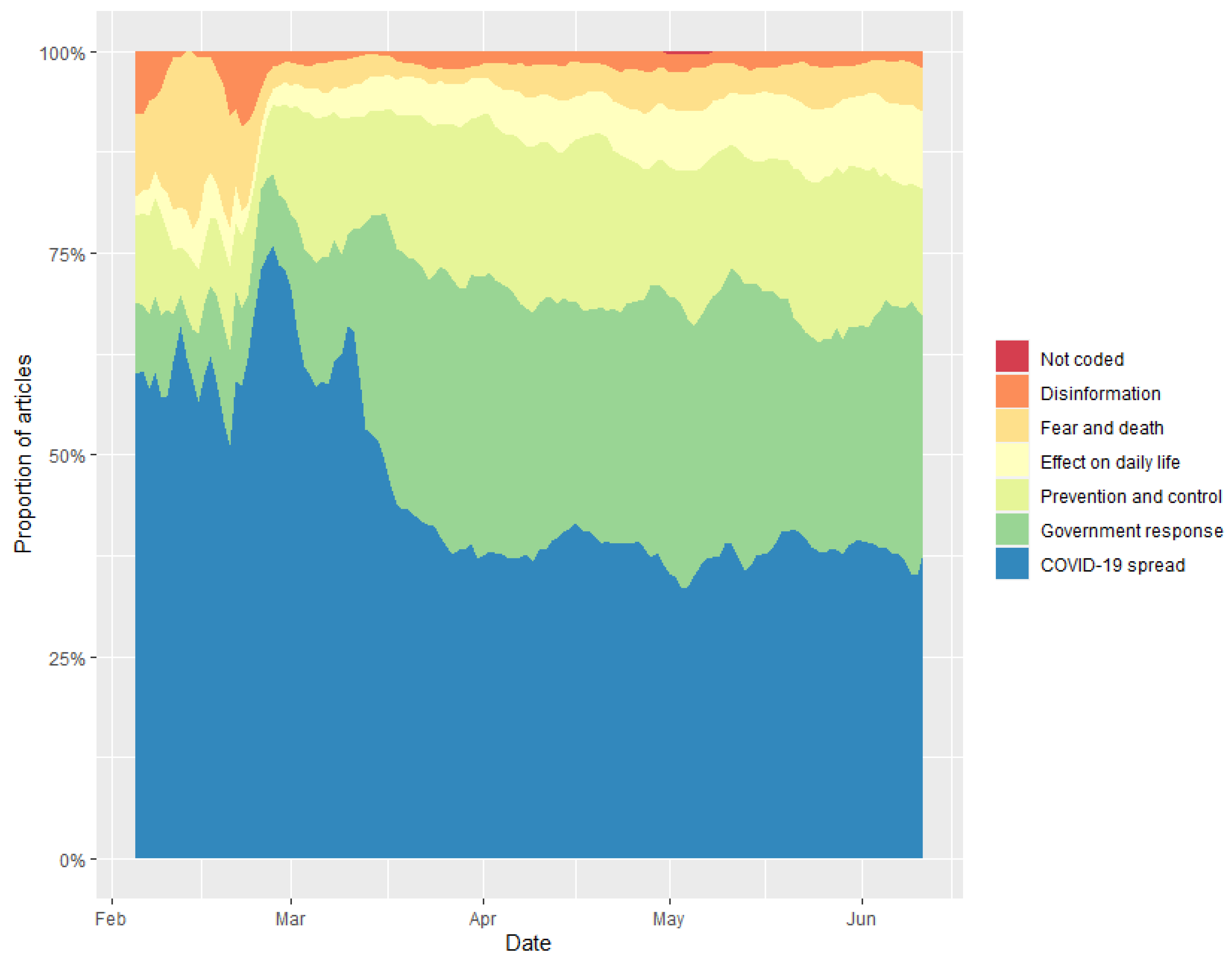
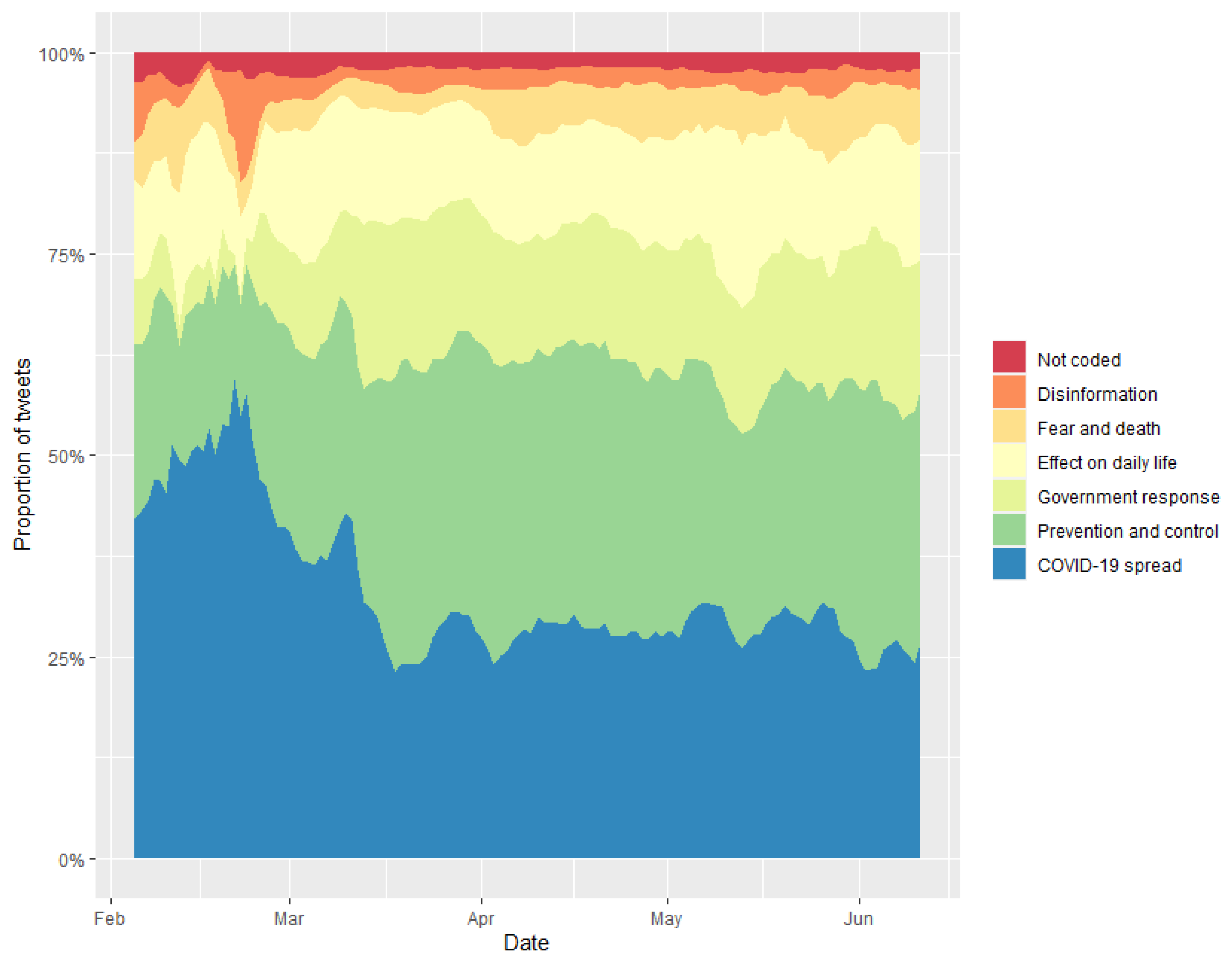
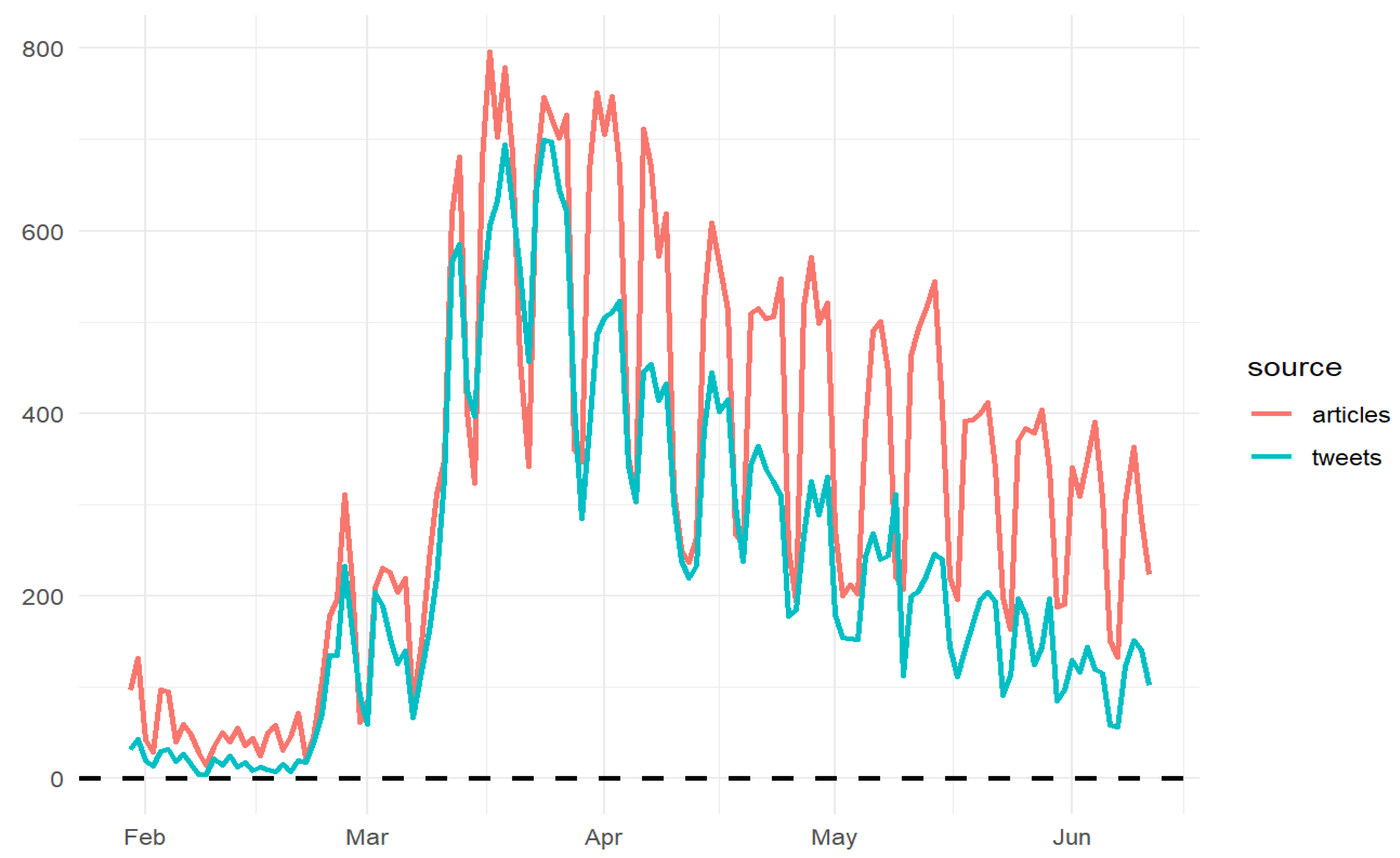
| Model 1 | Model 2 | |||
|---|---|---|---|---|
| Change in article mentions | Change in tweet mentions | Change in article mentions | Change in tweet mentions | |
| Change in article mentions, lag 2 | −0.43 c | −0.16 c | −0.56 c | −0.16 c |
| Change in tweet mentions, lag 2 | 0.26 † | |||
| Change in article mentions, lag 4 | −0.24 c | −0.14 c | −0.26 c | −0.14 c |
| ISaturday | −58.88 b | −58.48 b | ||
| ISunday | −177.92 c | −81.51 c | −177.27 c | −81.51 c |
| IMonday | −83.38 c | −56 c | −87.41 c | −56 c |
| ITuesday | 83.63 c | 33.57 a | 82.08 c | 33.57 a |
| AIC | 2816.7 | 2814.9 | ||
| Correlation of residuals | 0.69 | 0.70 | ||
| Box-Ljung test Χ2 for the residuals, 15 lags | 17.8, p = 0.27 | 22.0, p = 0.11 | 17.7, p = 0.28 | 22.0, p = 0.11 |
Publisher’s Note: MDPI stays neutral with regard to jurisdictional claims in published maps and institutional affiliations. |
© 2022 by the authors. Licensee MDPI, Basel, Switzerland. This article is an open access article distributed under the terms and conditions of the Creative Commons Attribution (CC BY) license (https://creativecommons.org/licenses/by/4.0/).
Share and Cite
Šķestere, L.; Darģis, R. Agenda-Setting Dynamics during COVID-19: Who Leads and Who Follows? Soc. Sci. 2022, 11, 556. https://doi.org/10.3390/socsci11120556
Šķestere L, Darģis R. Agenda-Setting Dynamics during COVID-19: Who Leads and Who Follows? Social Sciences. 2022; 11(12):556. https://doi.org/10.3390/socsci11120556
Chicago/Turabian StyleŠķestere, Lāsma, and Roberts Darģis. 2022. "Agenda-Setting Dynamics during COVID-19: Who Leads and Who Follows?" Social Sciences 11, no. 12: 556. https://doi.org/10.3390/socsci11120556
APA StyleŠķestere, L., & Darģis, R. (2022). Agenda-Setting Dynamics during COVID-19: Who Leads and Who Follows? Social Sciences, 11(12), 556. https://doi.org/10.3390/socsci11120556







